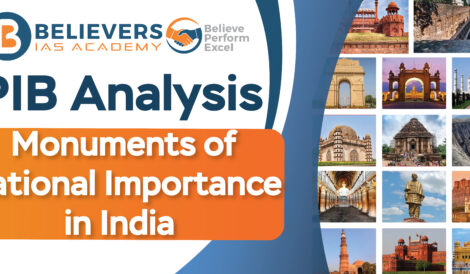India’s Bond Market Evolution and the Path to Global Indices
Context:
The article explores India’s recent journey towards internationalizing its bond markets and the potential inclusion of Indian local currency government bonds (LCGBs) in global indices. It delves into the implications of this move, focusing on the benefits, risks, and the broader context of India’s financial evolution.
Relevance:
GS-03 (Economy)
Prelims:
Government security (G-sec), Debt instrument, Bond Yield
Mains Question:
Evaluate the recent developments in India’s efforts to integrate its government bonds into global indices. Discuss the potential benefits, risks, and the importance of a gradual approach in the context of currency internationalization. (250 words)
Government Securities:
- Government Securities, commonly known as G-Secs, constitute a tradable financial instrument issued by either the Central Government or State Governments.
- Functioning as a form of debt instrument, G-Secs serve as a means for the government to raise funds from the public to address its Fiscal Deficit.
- These instruments represent a contractual obligation, where the issuer commits to paying the holder a fixed amount, referred to as the principal or face value, on a specified date.
- G-Secs come in short-term, known as treasury bills, with original maturities of less than one year (issued in 91-day, 182-day, and 364-day tenors), as well as long-term, termed Government bonds or dated securities with an original maturity of one year or more.
- While the Central Government issues both treasury bills and bonds, State Governments exclusively release bonds, termed State Development Loans (SDLs). Renowned for their minimal risk of default, G-Secs are often deemed risk-free gilt-edged instruments.
- Gilt-edged securities, regarded as high-grade investment bonds, are presented by governments and substantial corporations to secure borrowed funds.
- The Reserve Bank of India (RBI) actively engages in Open Market Operations (OMOs) for the sale or purchase of G-Secs, strategically adjusting money supply conditions.
- Through selling G-Secs, the RBI extracts liquidity from the system, while repurchasing them serves to infuse liquidity into the financial framework.
Dimensions of the Article:
- Initiating Global Inclusion
- Evolution of India’s Approach
- Benefits and Risks of Integration: Path to Globalization
- Challenges of Internationalization
- Currency Internationalization Process
- Unforeseen Consequences
Initiating Global Inclusion:
- The global financial landscape witnessed a pivotal shift as India embarked on the process of integrating its government bonds into global indices. Commencing in 2019, the journey gained momentum with significant initiatives by J.P. Morgan in September 2023 and Bloomberg’s proposal in January 2024.
- The evolving scenario places FTSE Russell in the spotlight for potential upgrades, highlighting a growing global demand for transformative reforms in India’s government bond market.
Evolution of India’s Approach:
- Tracing back to 2019, India set forth its strategy to incorporate government bonds into global indices.
- Overcoming initial hurdles related to capital gains taxes and local settlement issues, the introduction of the “fully accessible route (FAR)” played a pivotal role in facilitating foreign investment.
- Recent actions by J.P. Morgan and Bloomberg signal a dynamic evolution, indicating the potential inclusion of Indian LC government and corporate bonds in more benchmark indices.
Benefits and Risks of Integration: Path to Globalization
- A comprehensive report by the Inter-Departmental Group (IDG) of the Reserve Bank of India (RBI) in October 2022 sheds light on the substantial benefits of internationalizing the rupee.
- By integrating Indian LCGBs into global indices, the nation could reduce dependence on domestic institutions, enhance fund stability, and offer improved financing options.
- However, inherent risks, including heightened sensitivity to external factors and potential loss of autonomy in controlling long-term rates, demand careful consideration.
Challenges of Internationalization:
- While the discourse often emphasizes the advantages of foreign investment in local currency bond markets (LCBM), this article unveils the intricacies and challenges associated with internationalization.
- Dispelling the misconception of foreign portfolio inflows providing stable and long-term funding, it emphasizes the volatility and risks linked to exchange rates. Drawing parallels with experiences in Malaysia and Türkiye, the article brings attention to potential pitfalls, urging a balanced approach.
Currency Internationalization Process:
- Drawing insights from Y.V. Reddy’s perspective in a June 2023 article, the discussion underscores that currency internationalization is a gradual process intricately tied to the development of the financial system and economic performance.
- It questions the rush towards internationalization, emphasizing the importance of building a robust financial foundation before venturing into such endeavors.
Unforeseen Consequences:
- The article issues a cautionary note about the underestimated risks of internationalization, particularly in inherently unstable international financial markets.
- Highlighting the potential for increased exchange rate instability and the risk of boom-bust cycles in capital flows, it challenges the prevailing perception that unhindered access to emerging markets leads to unbridled benefits.
- Urging a nuanced consideration of the consequences, the narrative calls for a thoughtful approach to global inclusion in India’s bond market.
Way Forward:
- The way forward involves a cautious approach to internationalization, addressing the identified risks and challenges.
- Prioritizing a robust financial system, focusing on sustained development, and careful consideration of the consequences are essential.
- A phased approach, aligned with evolving economic performance, is recommended to ensure a more stable and secure international financial integration.




